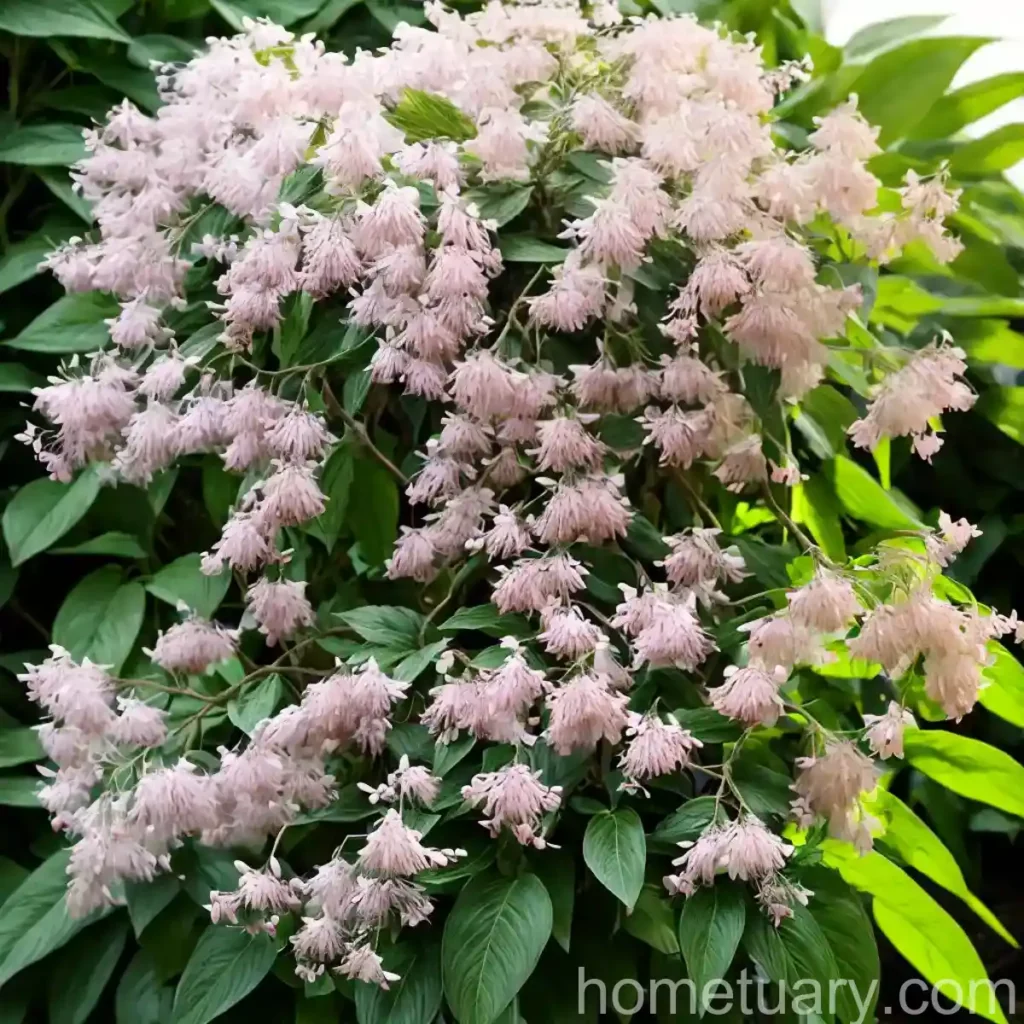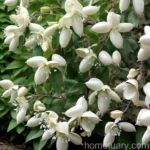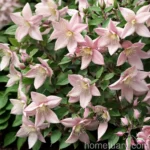Everything You Need to Know About Deutzia x Magnifica
Deutzia x magnifica, commonly known as deutzia, is a beautiful and versatile flowering shrub that is valued for its showy flowers and attractive foliage. As a plant scientist and enthusiast, I am excited to share with you a comprehensive guide to this stunning plant. Whether you are a novice gardener or an experienced horticulturist, this article will provide insights into the culture, uses, care, and maintenance of Deutzia x magnifica.
What is Deutzia x Magnifica?
Deutzia x magnifica is a deciduous hybrid shrub belonging to the hydrangea family (Hydrangeaceae). It is a cross between Deutzia discolor and Deutzia longifolia. This plant is renowned for its elegant, arching branches and abundance of delicate, star-shaped flowers. The species name “magnifica” alludes to the magnificent nature of this plant’s blooms.
Key Takeaways
Before delving into the specifics of Deutzia x magnifica, let’s take a look at some key takeaways regarding its culture, uses, and requirements.
Culture
– Deutzia x magnifica thrives in well-draining soil and benefits from regular watering during the growing season.
– It is a low-maintenance plant that requires minimal pruning to maintain its shape and promote flowering.
– This shrub is adaptable to various soil types and is relatively pest and disease resistant.
Uses
– Deutzia x magnifica is commonly used in gardens and landscapes as a focal point or a mass planting for a stunning display of spring blooms.
– It can be utilized in mixed borders, woodland gardens, or as an informal hedge.
Care
– Adequate sunlight, water, and occasional fertilization are essential for the optimal growth and blooming of Deutzia x magnifica.
– The plant can be propagated through softwood cuttings or division of the root ball.
Now, let’s explore each of these aspects in more detail.
Culture
Water
Deutzia x magnifica has moderate water needs and thrives in well-draining soil. Water the plant deeply and regularly during the growing season, especially during dry spells. While the plant prefers moist soil, it is essential to avoid waterlogging, as excessive moisture can lead to root rot and other problems.
Sunlight
This shrub performs best when planted in locations with full sun to partial shade. It is important to provide ample sunlight for the plant to promote robust growth and profuse flowering. In hot climates, providing some afternoon shade can help protect the plant from excessive heat stress.
Fertilizer
An annual application of a balanced, slow-release fertilizer in early spring can provide the necessary nutrients for healthy growth and abundant flowering. Select a fertilizer with a balanced ratio of nitrogen, phosphorus, and potassium, and follow the application instructions on the product label.
Soil
Deutzia x magnifica is adaptable to various soil types, including loamy, sandy, or clay soils, as long as they are well-draining. Amending the soil with organic matter, such as compost or well-rotted manure, can enhance its fertility and drainage. A slightly acidic to neutral pH range is suitable for this plant.
Pruning
Pruning Deutzia x magnifica is relatively simple and primarily focuses on maintaining the plant’s shape and promoting flowering. It is best to prune the shrub immediately after flowering to encourage new growth and maintain its desired form. Remove any dead or damaged branches, as well as older wood to rejuvenate the plant.
Propagation
Deutzia x magnifica can be propagated through softwood cuttings taken in late spring or early summer. Select healthy, non-flowering shoots and trim them to 4-6 inches in length. Remove the lower leaves, dip the cut ends in a rooting hormone, and plant the cuttings in a well-draining propagation medium. Keep the medium consistently moist and provide bottom heat to encourage root development.
Container Popularity
While Deutzia x magnifica is often grown in garden and landscape settings, it can also thrive in containers, making it a versatile choice for patios, balconies, and small gardens. When growing it in a container, ensure that the pot has adequate drainage and use a high-quality potting mix to support the plant’s growth.
Container Common Diseases
When grown in containers, Deutzia x magnifica may be susceptible to certain diseases, including:
- Powdery Mildew: This fungal disease can present as white, powdery patches on the leaves, compromising the plant’s health and appearance. It thrives in warm, dry conditions with poor air circulation.
- Leaf Spot: Leaf spot diseases can cause dark or discolored spots on the foliage, affecting the overall aesthetics of the plant. Overhead watering and high humidity can contribute to the development of leaf spot diseases.
Disease Diagnosis
Identifying and diagnosing diseases in Deutzia x magnifica is crucial for implementing timely and effective management strategies. Common signs of disease include unusual spots, discoloration, wilting, or abnormal growth patterns. Additionally, regularly inspecting the plant for any signs of distress or abnormal symptoms can aid in early detection and treatment.
Common Pests
While Deutzia x magnifica is relatively resistant to pests, it may occasionally encounter pest pressures, including:
- Aphids: These small, soft-bodied insects can cluster on the new growth and underside of leaves, causing damage by feeding on the plant’s sap. They can be dislodged with a strong stream of water or managed using insecticidal soaps or horticultural oils.
- Scale Insects: Scale insects may appear as small, raised bumps on the stems and leaves, sapping the plant’s vitality. Pruning heavily infested areas and using horticultural oils can help control scale populations.
Botanist’s Tips
As a botanist, I have some valuable tips for cultivating and caring for Deutzia x magnifica:
- Encourage naturalistic and informal planting designs by incorporating Deutzia x magnifica in mixed borders or cottage gardens for a charming and natural appeal.
- Utilize the plant’s graceful arching habit to create visually appealing compositions, whether in a single specimen planting or as part of a larger landscape design.
- Incorporate companion plants that complement the color and form of Deutzia x magnifica, such as perennials with contrasting foliage or other shrubs with complementary flowering times.
Fun Facts
- The genus name “Deutzia” honors Johann van der Deutz, a patron of botany and one of Carl Linnaeus’s students.
- Deutzia x magnifica exhibits a striking floral display, with abundant clusters of white or pink blossoms that embellish the plant in late spring to early summer.
- Some species of Deutzia are traditionally used in herbal medicine for their astringent and medicinal properties, although it is important to consult professional sources before using them for medicinal purposes.
Links to External Resources
For further information on Deutzia x magnifica care, landscaping ideas, and plant varieties, explore the following resources:
- Deutzia x magnifica: Planting and Care Guide
- Landscaping with Deutzia: Tips and Ideas
- Deutzia Varieties and Growing Tips
In conclusion, Deutzia x magnifica is an outstanding shrub that combines ornamental value with ease of care, making it an excellent choice for various garden and landscape settings. By understanding its cultural requirements, optimal care techniques, and potential uses, you can fully appreciate and maximize the potential of this beautiful plant. Whether you’re drawn to its abundant blooms, graceful form, or adaptability, Deutzia x magnifica undoubtedly deserves a place in the horticultural realm. Happy gardening!
References
- Proven Winners. “Deutzia x magnifica.” https://www.provenwinners.com/plants/deutzia/magiciantm-deutzia-x-magnifica
- The Morton Arboretum. “Deutzia scabra.” https://www.mortonarb.org/trees-plants/tree-plant-descriptions/pride-rochster-rough-deutzia
- Missouri Botanical Garden. “Deutzia.” http://www.missouribotanicalgarden.org/PlantFinder/PlantFinderDetails.aspx?kempercode=a828
Note: The information provided in this blog post is for educational and informational purposes only, and it is not intended as a substitute for professional horticultural or botanical advice. Always consult with a qualified horticulturist or botanist regarding the cultivation and care of plants.















